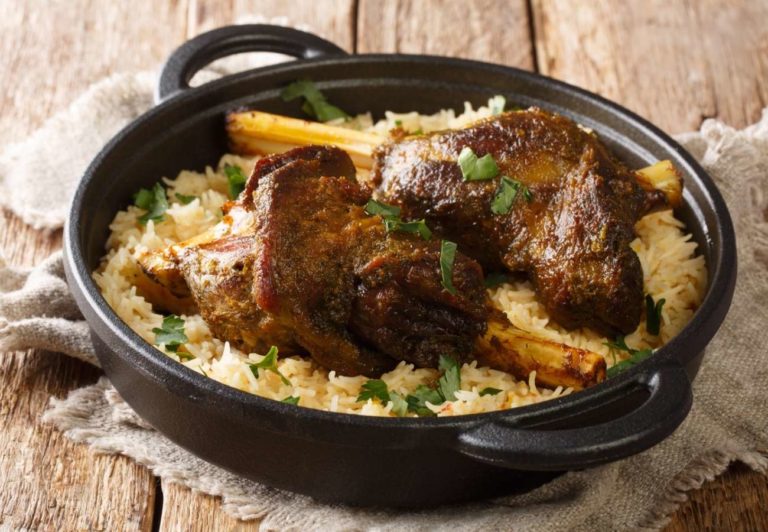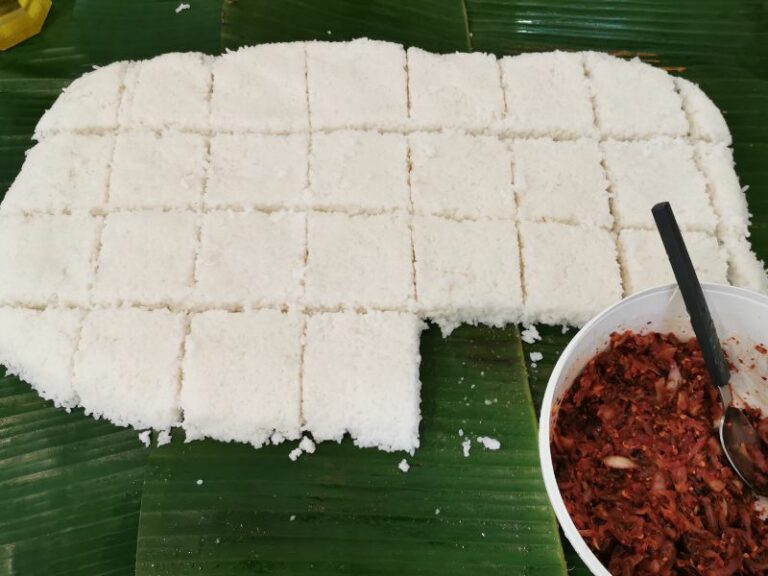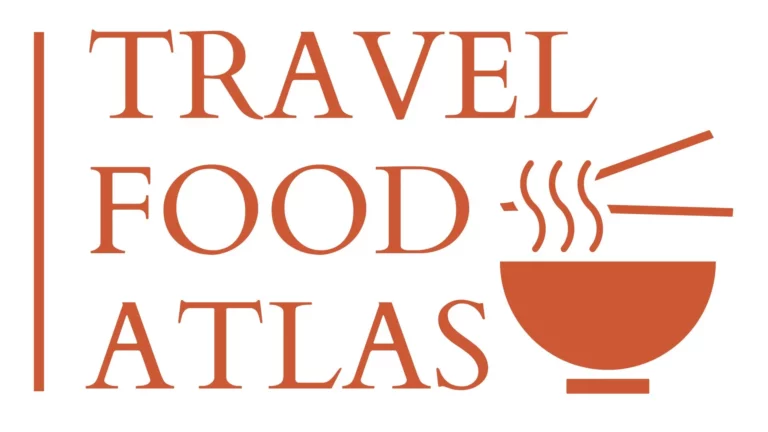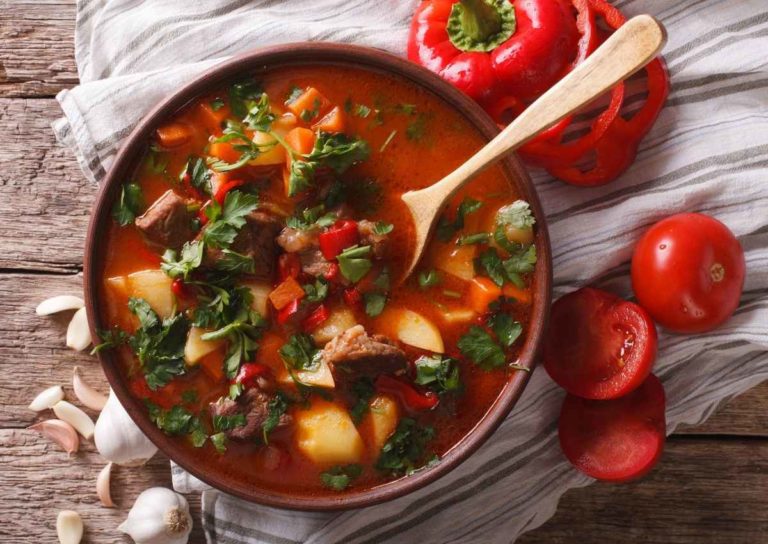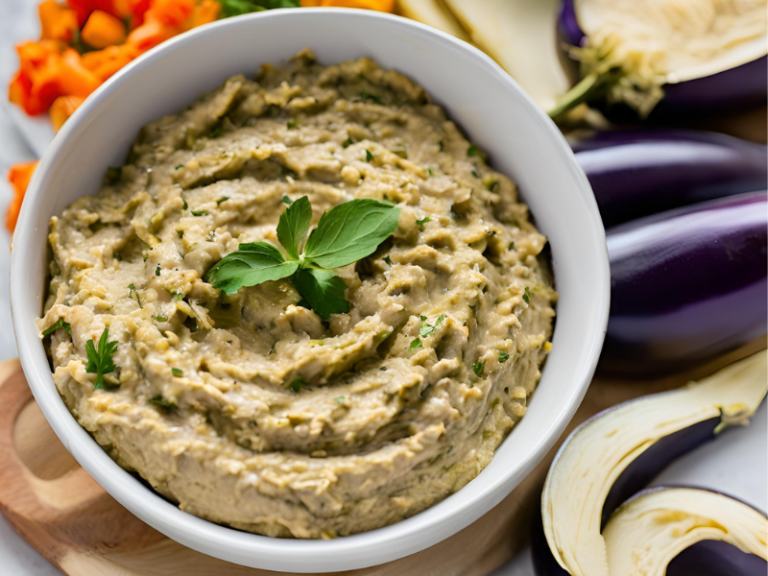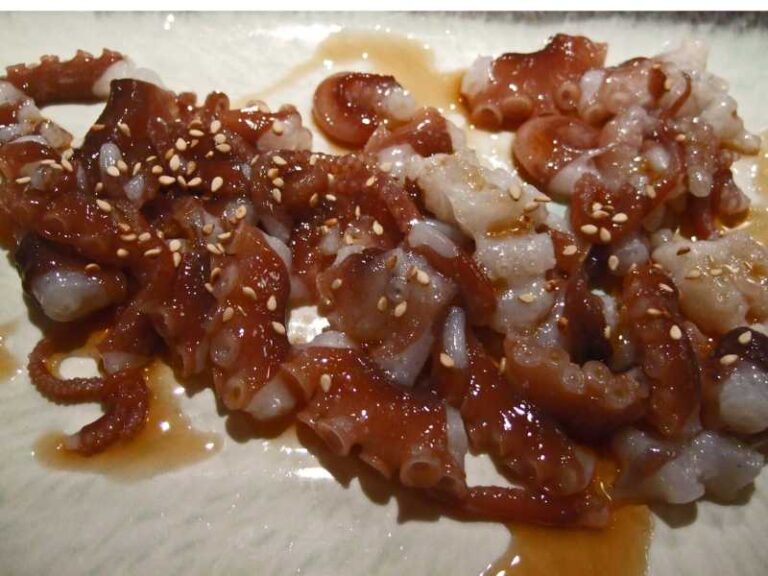North Korean Food: 20 Traditional Dishes of North Korea
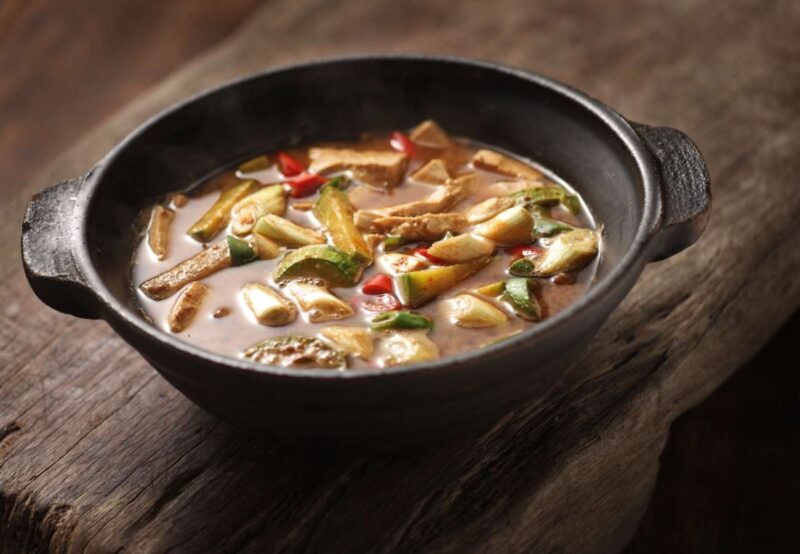
North Korea is known for being the most isolated country in the world, with a communist dictatorship that rarely allows its citizens to leave. Since the war between North and South Korea in the 1950s, the regime has been closed to the influences of other countries, with the occasional exception of China and Russia who are its neighbors and allies.
Suffice to say North Korean cuisine has not had the same opportunities to evolve and develop like other country’s cuisines have over the past 100 years. Hardly touched by globalization, North Korea’s most traditional dishes are likely very similar to those of the 1950s and 60s.
Being such a secretive society, it is difficult to know for definite how most North Koreans live but we do get occasional insights from those who have defected to the West from North Korea or Westerners who have lived in North Korea. We also hear of the gastronomic eccentricities of the leader Kim Jong-un, such as him flying in a McDonalds meal from China, but this is hardly representative of the general population.
North Korean and South Korean food share a lot of similarities owing to a a shared history and a close geographical proximity. There are many dishes that are staples in both countries, such as Kimchi, Soju and various rice dishes. However, North Korean food is typically not as spicy and is more sour than that of the South.
Rice and noodles are staple ingredients in most traditional North Korean dishes. The most common meats consumed in the country is pork but rabbit and goat are also eaten. Soy sauce, garlic, ginger, bean paste and sesame oil are key flavorings that make up most dishes.
Naengmyeon (Cold Noodles)
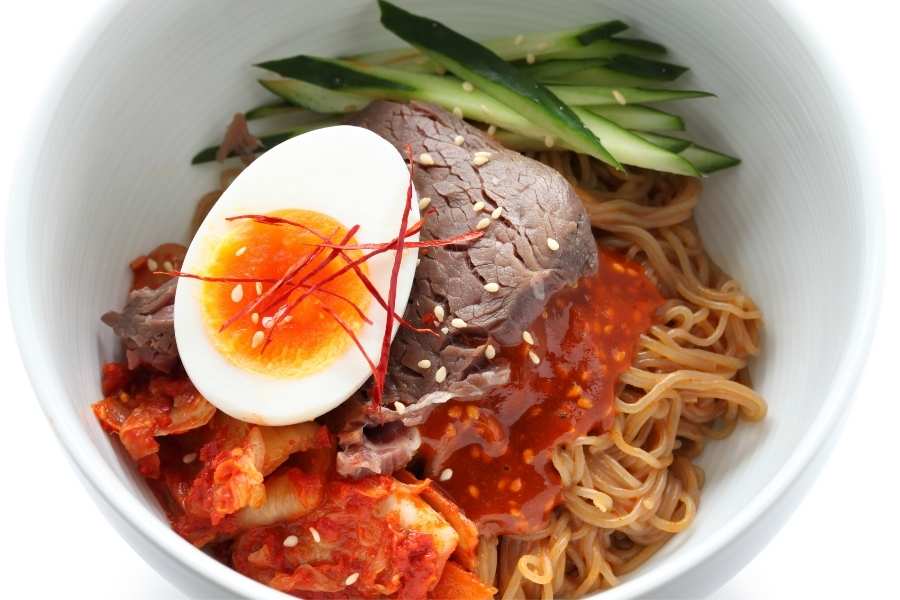
Naengmyeon is a noodle dish most typically prepared using a mixture of the flour/starch from wheat and potatoes. The percentage of each component varies, depending on the region. Potatoes prevail in the Sinuiju and Anju regions, while the wheat flour version prevails in Kaesong.
It is a very popular dish that usually accompanies grilled meats.
Pyongyang Onban
Pyongyang Onban consists of boiled rice placed in a bowl and covered with green bean tortillas and shredded chicken.
It is served with soy soup with hot sauce, green onions, fried egg cut into strips, sesame seeds and pepper. A special spiced soy sauce and kimchi nabak prepared with horseradish is typically served alongside.
Nampo Petrol Clams

Nampo Petrol Clams is a dish made from good-sized clams resting on a bed of stones and covered with pine needles. A jet of gasoline is then poured over them and the fuel ignites. Surprisingly, clams cooked this way have no trace of gasoline and are extremely tasty.
Doenjang Jjigae (Bean Paste Stew)
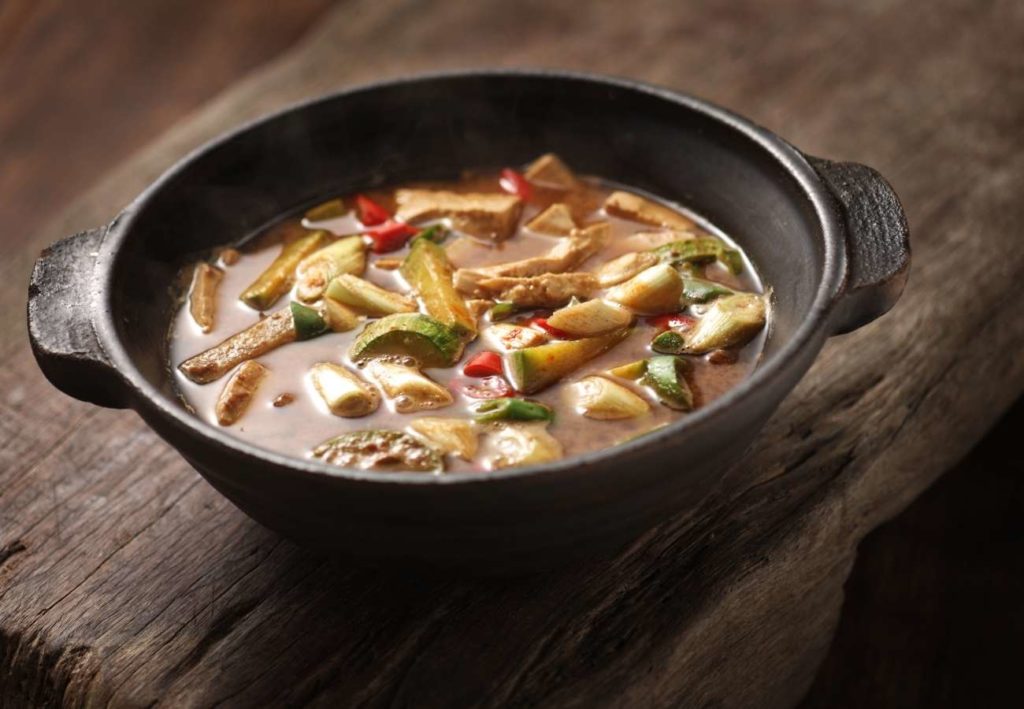
Korean bean paste is a type of fermented paste prepared entirely from brine and soybean. It is one of the traditional staples that make up many other dishes and is thousands of years old. Decades ago North Koreans would prepare bean paste at home, although today it is produced industrially.
It is a food rich in calories and nutritional elements (more than 60 different ones), and each Korean eats between 30 and 50 grams of bean paste every day. It adds a very special flavor to many dishes and is great when seasoned with pepper or mixed with soy and vinegar.
Doenjang Jjigae is a stew dish made from bean paste, along with other ingredients such as meat, seafood and vegetables.
Soju (Rice liquor)
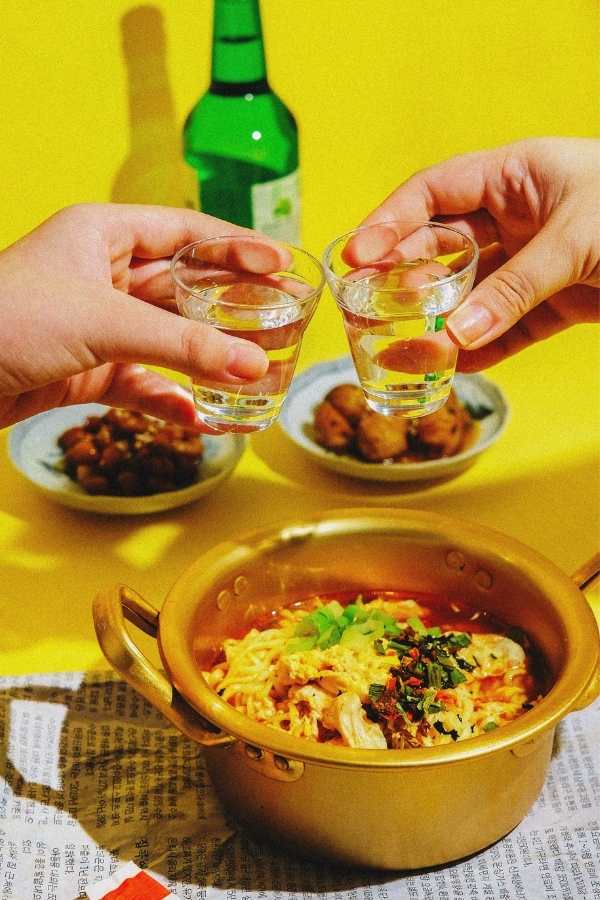
Soju is a traditional Korean liquor that has many varieties depending on the distillation process, and can be prepared at home. The best-known brands are Kamhongno from Pyongyang and Riganggo from Hwanghae Province.
Among its different variations, Kokju (corn liquor) is quite popular in North Korea. It has a moderate alcohol content and a very aromatic flavor.
Paektusan Blackberry Wine
Paektusan is a prestigious wine is a specialty from the Paektu Mountains, where blackberries from the Samjiyon region are especially tasty.
Every year several tons of the blackberries are collected to prepare the wine. With 63% sugar and a degree of acidity of 1.8%, it is exquisite and of an inimitable color.
Pansanggi
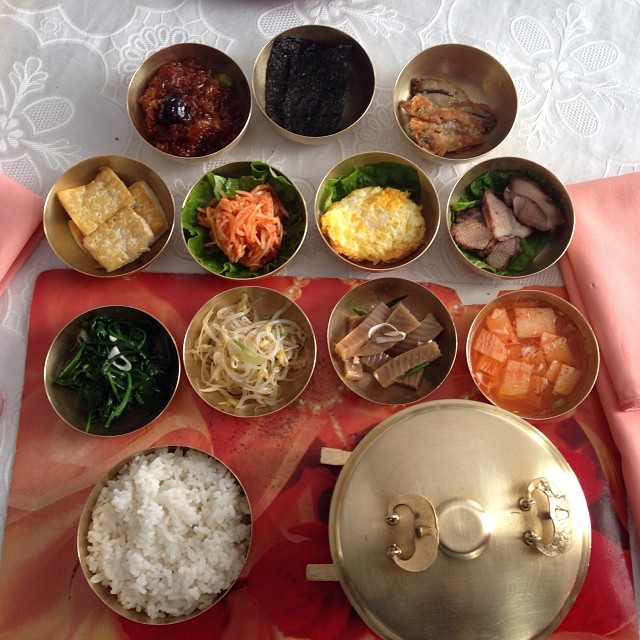
Pansanggi is a meal made up of an odd series of dishes – between 5 and 11 – not counting rice and soup.
Kaesong’s Pansanggi is one of the best known variations. The brass containers, in which it is served, are said to stimulate the appetite.
Kaesong Koryo Insam (Ginseng)

Koryo ginseng is a mountain extract superior to all others due to the characteristics of the soil, the quality of the water and the weather conditions. Based on the process used in its preparation, there are three types: hongsam, paeksam and thangsam.
All of these are high quality and have special medicinal virtues. Insam is said to protect the five organs of the body and is good for the brain, cerebellum, heart and circulation, in addition to stimulating the secretion of some glands and helping metabolism. Many North Koreans believe that it is also effective against cancer and the harmful effects of radioactivity.
Kkotgetang (Flower-Shaped Crab Stew)
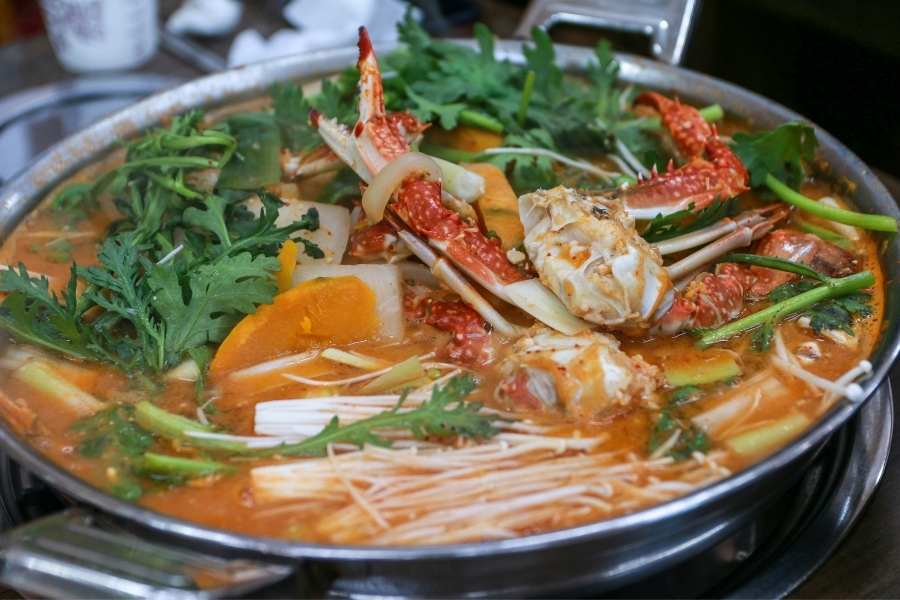
Kkotgetang is a stew, a specialty of the West Coast, which is prepared from a special type of crab that gets its name from the shape of a flower. Its carapace is about 15 cm wide and about 7 cm long, with flat back legs. Boiled kkot gye is tasty and nutritious, and is very popular across the entire Korean peninsula.
Kimchi
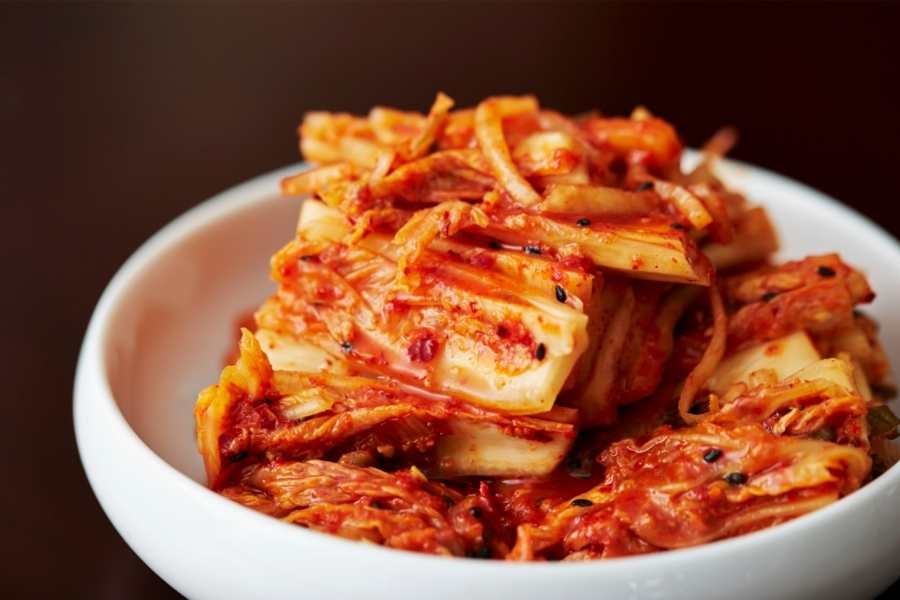
Kimchi is a side dish prepared with cabbage, radishes and other vegetables mixed with pears, walnuts, red pepper, chives, garlic, ginger and other seasonings.
There are different varieties of kimchi depending on the regions and the ingredients used. They have a strong and slightly sour taste and a very special aroma. In late autumn, Koreans prepare kimchi as a special side dish for winter.
Bibimbap
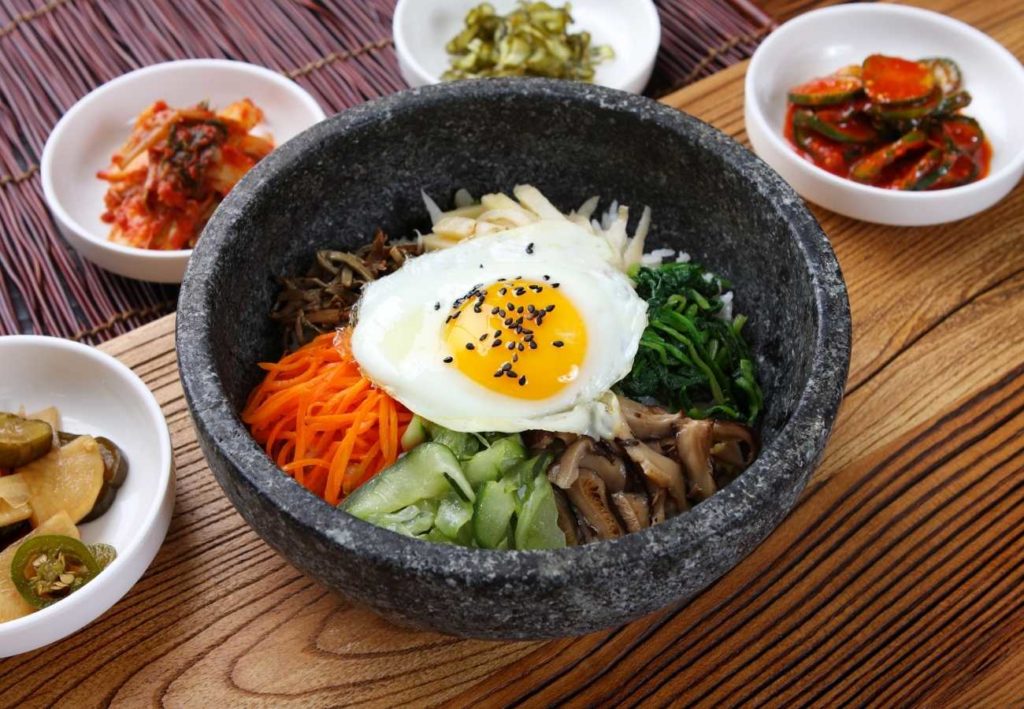
Dolsot Bibimbap is dish consisting of steamed rice and sides served in a hot stone bowl, popular in both North and South Korea. The sides are typically a variety of vegetables for example, carrots, mushrooms and spinach, meats, eggs and sauce.
Bossam Kimchi
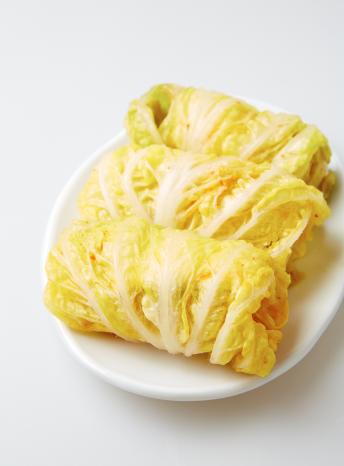
A very popular dish in Kaesong, Bossam Kimchi is prepared using sliced pine nuts, apples and pears placed on spiced cabbage leaves. They are then wrapped up and cooked in a bowl. When served, the tip is cut into a cross shape and is visually very pretty.
Yakbap
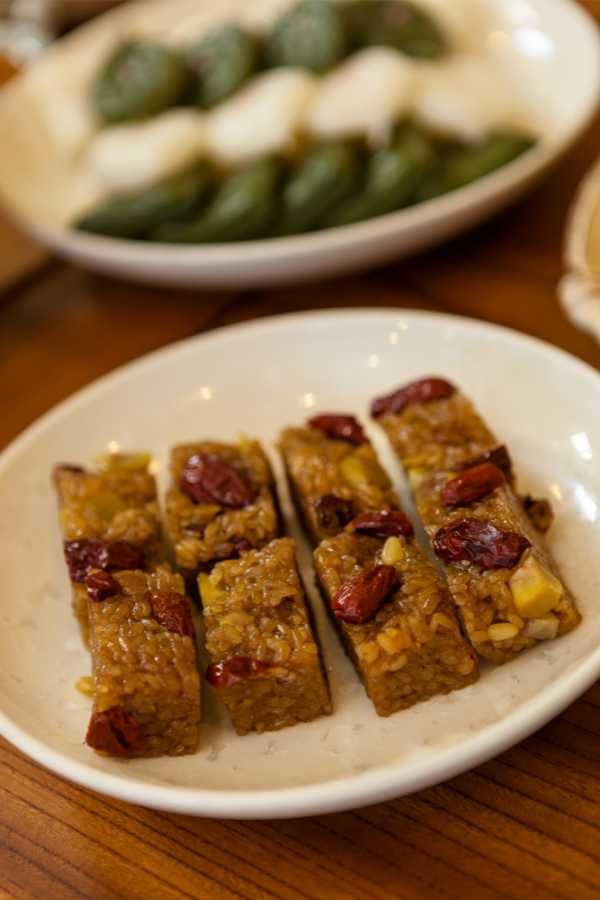
Another specialty of Kaesong, Yakbap is made with glutinous rice and honey. The boiled rice is mixed with dried persimmons, boiled walnuts, jojobas, ferns, sliced mushrooms and then with honey and soy sauce. Yakbap is said to be good for living a long and healthy life.
Yellow Snake Distillate (Snake Whiskey)
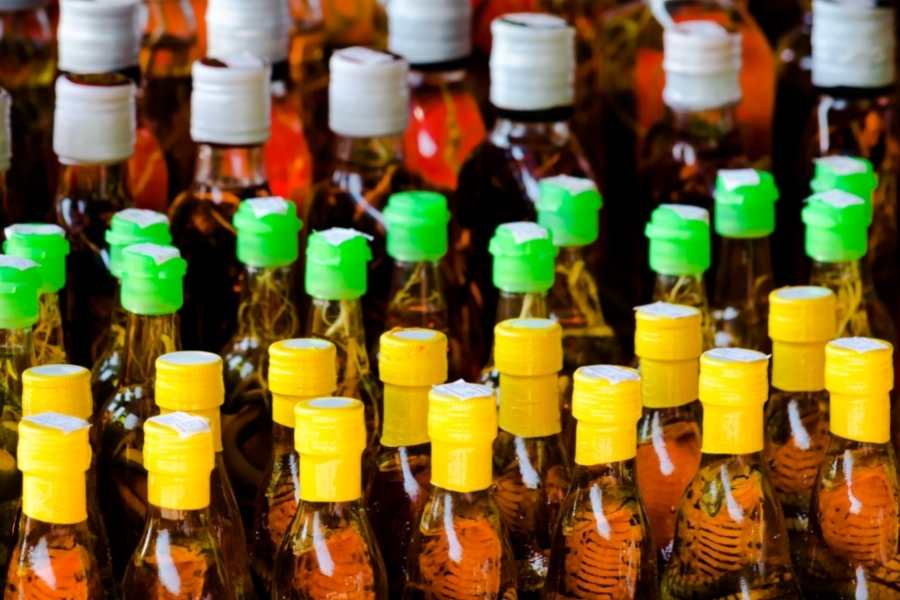
In Korea, yellow snake is left to macerate in 60% alcohol and then buried until the medicinal elements are activated.
The liquor is said to make the organs of the body soften and to extend the sexual life of men. Sinpyeong House Yellow Snake Liquor is particularly popular.
Korean Soondae Blood Sausage
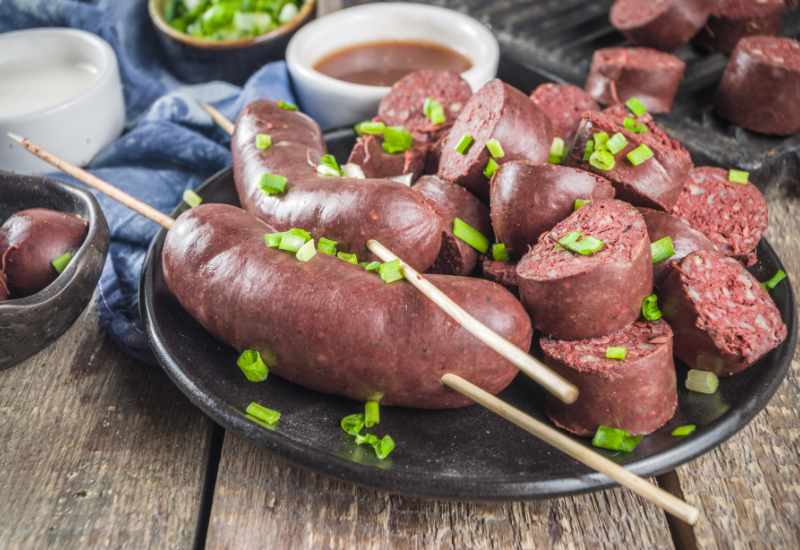
Soondae or Blood Sausage is a sausage popular in both North and South Korea, prepared by steaming cow or pig intestines filled with various ingredients such as dangmyeon (glass noodles), vegetables, rice and the cow or pig’s blood.
Ttukbaegi Thang
The Ttukbaegi Thang is a stove that contains a small clay jug with a very large mouth. Bean paste is put in the container, which has a very special flavor and is very digestive.
Pine mushrooms found in the Kumgang region, Myohyang and in the Chilbo Mountains are added to the dish, which is delightfully sweet and aromatic.
Bulgogi
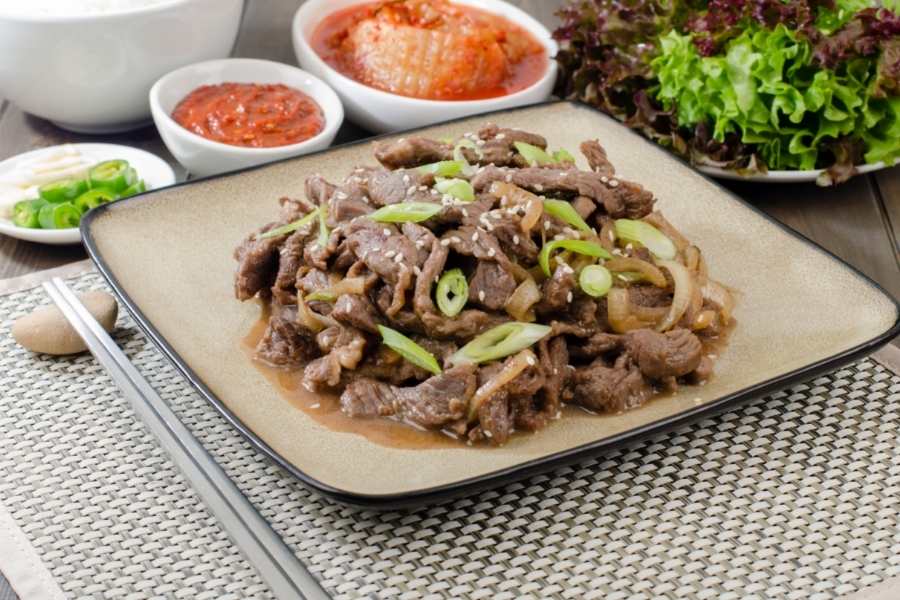
Add sliced beef with pine mushrooms and onion and you have pretty much everything you need to prepare Bulgogi. It is cooked in the oven at 250°C and served with plenty of garlic. The way it is cooked on the barbecue further enhances its flavor.
Hoeryong White Apricots
Hoeryong White Apricots are a specialty of the Hoeryong region where there are 1,200 hectares of white apricot fruit growing. They bloom in late April and ripen in mid-July.
The light yellow apricot is very mild and has a great aroma. Canned with wine and syrup, it is a Korean specialty that is highly prized in foreign markets.
Mandu
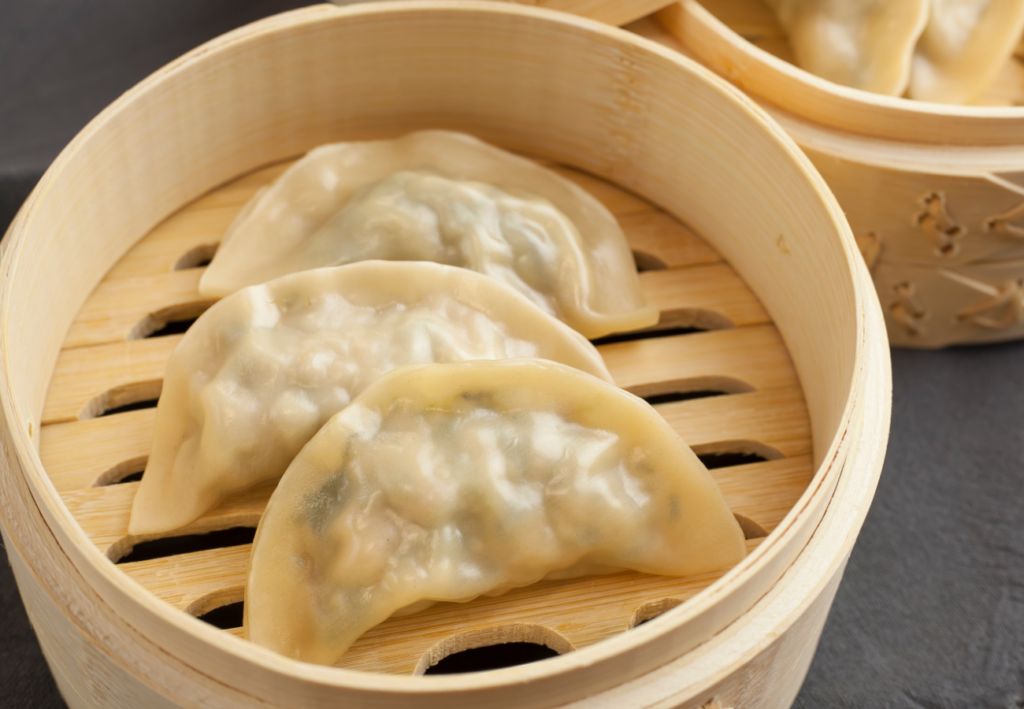
Mandu are Korean dumplings, which are thin wrappers stuffed with a savory filling. They are usually filled with various vegetables, meat and/or fish, and can be cooked by boiling, steaming or frying.
Traditionally mandu wrappers were made from scratch, but today pre-made wrappers are easily available in local stores. They are usually served with a sweet, tangy dipping sauce made of soy sauce, sugar and white vinegar.
Garae-tteok
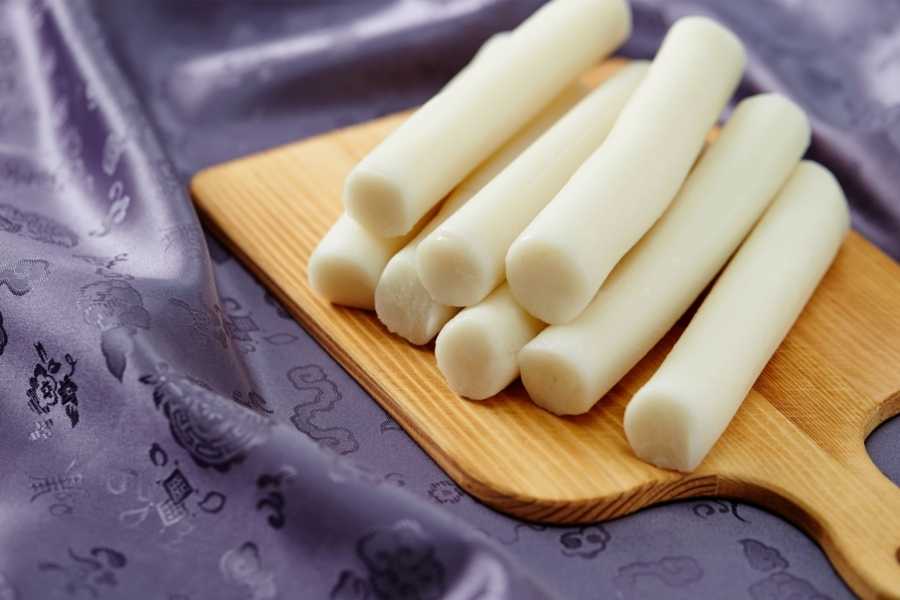
Garae-tteok is a type of Korean rice cake that is small in size and has a signature cylindrical shape. The rice cake dough is made from non-glutinous short grain rice flour, salt and water. The dough is steamed before being rolled and cut into cylinders.

